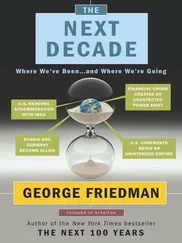It is hard to overemphasize just how important this broader view of marriage is. When marriage is taken out of the context of the person’s life pathway and viewed as an independent event, then marriage’s role in health is severely distorted. For example, another study, this one of about two thousand men and women in South Carolina, likewise found divorced men were much more likely to die young than steadily married or single men. However, like us, this group of researchers found that the divorce itself was only part of the problem: there was also something about the individual characteristics and life pathways of these men that put them at risk—for both divorce and poor health. 55 55 The South Carolina study is described in D. A. Sbarra and P. J. Nietert, “Divorce and Death,” Psychological Science 20 (2009): 107-13.
We might say there are trouble-prone families.
We’d discovered that not only was marital stability relevant to long life, but that we could often predict who would have a steady marriage. The lower mortality risk of married individuals was not solely linked to the protective, helpful effects of marriage. Instead, two other dynamics entered the picture. First, marital breakup—a very stressful life event—seems tied to a long-term negative impact on health. Second, some of the so-called health advantages of being married come from influences apparent in childhood—being conscientious and not having to face the divorce of one’s parents.
Recovery After a Second Marriage
You might have noticed a problem with our focus on personality and marriage success. It looks at the Terman participant but ignores his or her spouse. Yet some people divorce not because of anything about themselves but rather because they have inadvertently married trouble—someone with a personality unsuitable for a happy marriage. How could we take these issues into account?
We began by looking at the effects of divorce over a long period of time. Because many of those men who divorced later remarried, now so much the wiser, we could examine the matter again. How would such people fare in a second marriage? We looked out across the ensuing five decades at the men who remarried and then stayed married. 56 56 Our study of marital patterns is J. S. Tucker, J. E. Schwartz, K. M. Clark, and H. S. Friedman, “Age-Related Changes in the Associations of Social Network Ties with Mortality Risk,” Psychology and Aging 14, no. 4 (1999): 564-71.
We found a tendency for the higher mortality risk of remarried men (compared with their steadily married counterparts) to decline with age. That is, the longer they lived in their remarried state, the less important the previous divorce mattered as a threat to their health.
Happiness, Marriage, and Health
It’s easier to stay committed to the union if you’re in a happy marriage, of course, but there are other reasons for staying hitched. Some stay married because they can’t make ends meet without the spouse’s second income or because they fear the financial and emotional strains of divorce itself. Others stay married for the sake of the children even though, as we saw, it is difficult to leave the children unscathed. Still others suffer in a bad relationship because they fear loneliness. The long-term effects of staying in an unhappy relationship seemed like they should have a direct correlation to health.
Were the Terman subjects in happy marriages healthier? If our explanations about marriage, stress, and health are indeed more valid than explanations simply involving help with emergencies and medications and so on, then evidence should appear in the quality of the marriages. Fortunately for us, Dr. Terman was very interested in marital and sexual satisfaction.
A half century ago, there were no good measures of marital contentment, so the ever-innovative Dr. Terman developed and validated his own new marital happiness test. He did such a good job that his scale became the basis for most modern measures of marital satisfaction.
Do you and your partner share outside interests? Do you fight about religion? Dr. Terman zeroed right in on such matters and assessed couples’ preferences about spending leisure time together. He provided a list of forty activities, and the participants checked those that they really enjoyed doing and—here Terman was very clever—those that they really enjoyed doing with their spouse.
Dr. Terman also asked about regrets regarding marriage, whether the subjects had contemplated divorce, and whether they would choose the same spouse if life were to be lived over. Steadily married James checked the top of the scale; he was totally thrilled to be married to Irene. Irene was likewise delighted to be married to James, but her spousal reaction turned out to be less important to James’s health.
Loryana Vie, a graduate student in our lab, helped dig deeply into these data. Working with the rest of our team, she uncovered something quite unexpected. She started by going back to the reports that James and Irene and the others had completed in 1940, astutely making use of both the Terman subjects’ reports and the spouse reports. 57 57 Regarding marital happiness, see L. Vie, M. L. Kern, C. A. Reynolds, and H. S. Friedman, “Marital Happiness as a Predictor of Healthy Aging,” presented Nov. 20, 2009 at the Annual Scientific Meeting of the Gerontological Society of America, Atlanta, Ga.
Many were very happy with their marriages, many were only moderate in their satisfaction, and some were already not very happy.
Jumping forward almost a half century, we looked at the health and happiness of these people decades later. Some, like James, were very healthy, reporting good health, no cancer or heart disease, and the ability to complete daily tasks with little or no assistance. Others, in contrast, reported declining health, low energy, and serious illnesses. We also examined whether they reported a sense of well-being. Some of the participants were generally happy, satisfied with friends and with their living situation, and generally pleased with life. Others were gloomy and unhappy, listing many things they wished they had done differently in life and viewing themselves as less fortunate than their friends and colleagues.
By using our newly derived indexes, we could not only track the relations between early marital happiness and the resulting health and happiness decades later, but we could compare the effects of the husband’s happiness and the wife’s happiness. This is something special. Is the happiness of both partners relevant to the prediction of future health and well-being? Or perhaps it is the case, as the saying goes, that “a happy wife is a happy life”—that the wife’s satisfaction is what’s most important?
In general, researchers have found that the quality of one’s marriage is associated with a wide range of health indicators. Not surprisingly, people in miserable marriages tend to have more symptoms and worse health. 58 58 For an overview of studies on marriage and health, see J. K. Kiecolt-Glaser and T. L. Newton, “Marriage and Health: His and Hers,” Psychological Bulletin 127, no. 4 (2001): 472-503.
But no one has looked at these effects in detail over a long period of time. To dig into these issues, Loryana focused on the marriage quality information that Dr. Terman had collected in 1940. After some searching, she discovered the original scoring keys Terman had used as well as host of relevant marriage information. We examined the wife’s marital happiness, the husband’s marital happiness, and the overall marital happiness of the couple. What would be the state of their health decades later?
Adding together both the husband’s happiness and the wife’s happiness predicted the later health of the Terman participant. But something unusual seemed to be happening when we looked over the numbers. We realized that the clearest view of the findings came when we looked not at the happiness of the couple, nor at the happiness of the individual compared to the happiness of the spouse. Instead, the key was to look exclusively at the husband’s happiness.
Читать дальше











